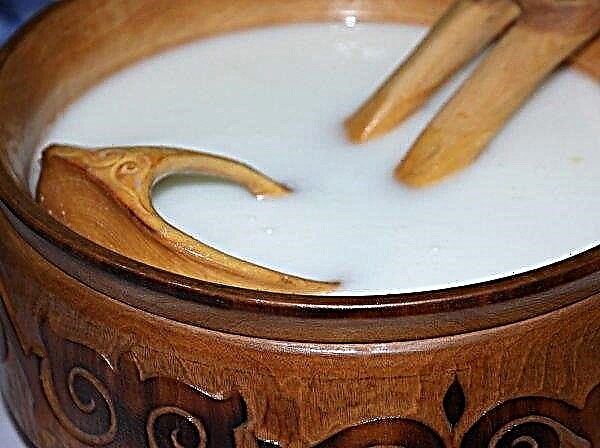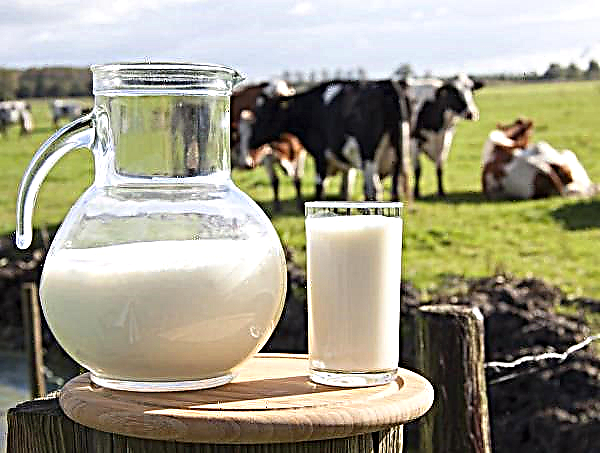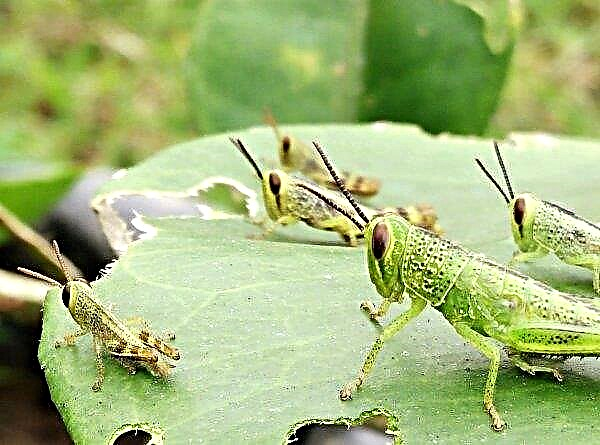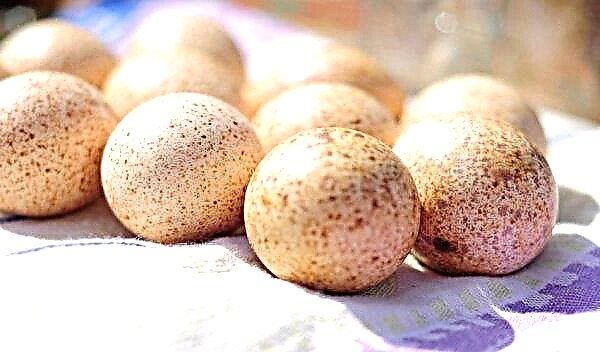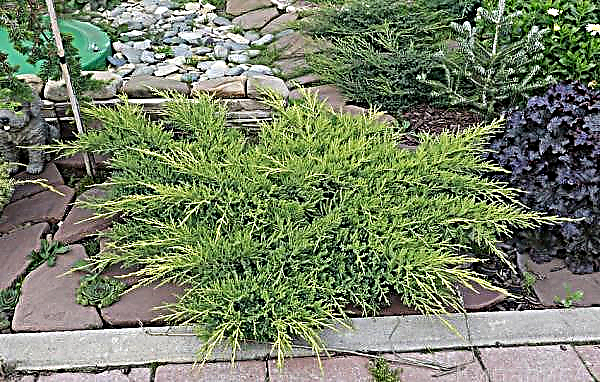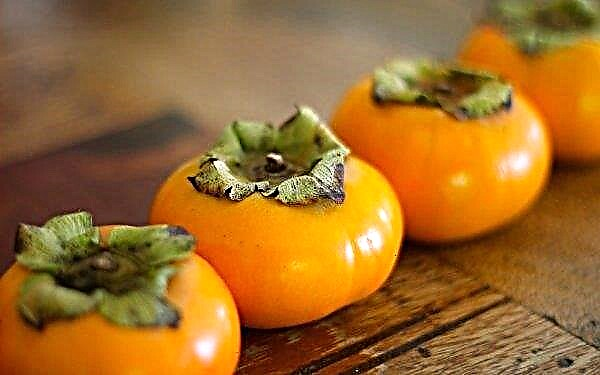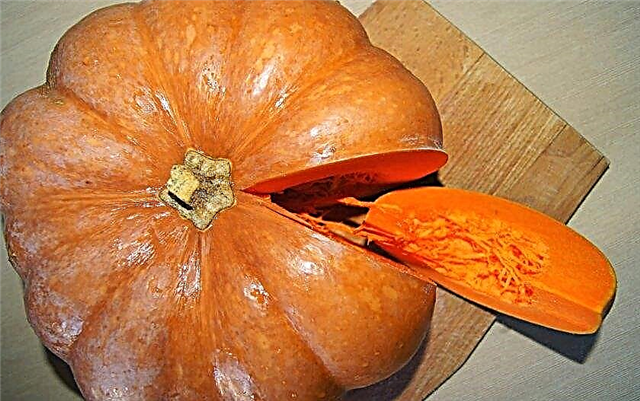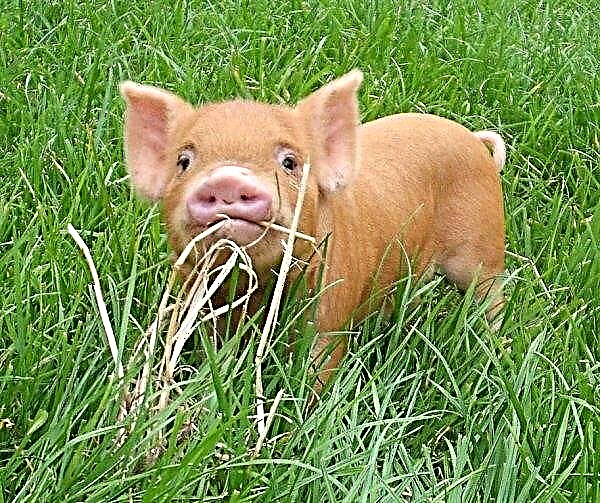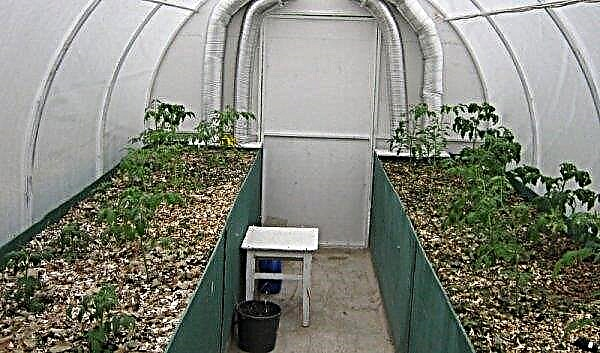One of the necessary conditions for keeping decorative rabbits in the house is round-the-clock access to clean drinking water. For this, the cage needs to be equipped with a drinking bowl. Such devices can be purchased at pet stores or made with your own hands. You will find tips on how to make a homemade drinker in our material.
Did you know? The smallest rabbit in adulthood weighed only 450 g, and the largest - 25 kg.
Basic requirements for rabbit drinkers
Any drinker must meet several requirements:
- Convenience. It should be convenient for the owner of the rabbit to fill the water, and the animal itself to drink. You should also make or choose options that are easy to wash and disinfect.
- Environmental friendliness. The device for water should be made of high-quality, environmentally friendly materials for animals.
- Safety. When installing in a cage, it is necessary to control that the drinker or fasteners do not contain sharp areas, burrs that can injure the pet.
- Roominess. A drinking bowl for 1 individual should hold at least 1 liter of water.
- Reliability and tightness. The drinking device must be securely fastened, be strong, not leak liquid, dust and dirt should not penetrate into it.

Types of drinking bowls for rabbits
Several types of drinking bowls are suitable for rabbits, each of which has both pros and cons.
Cup. The most simple and popular option, but at the same time not the most practical. It is a container of various shapes and from different materials into which water is poured. They are placed on the floor or attached to the net. Most often, animals choose ceramic or metal drinking bowls. They can also be plastic.
- Pros:
- Simplicity.
- Cheapness.
- Animals use water in a natural way.
- Minuses:
- In the loose form they are easily turned over.
- Often polluted.
- During a coup, water enters the cage and wets the litter.
- Sometimes animals can make need of such drinkers.
- It can quickly become empty, and during the day or at night the crawl will sit without water.
 Vacuum It is a bottle or a jar, under the neck of which a container is placed. It is fixed on the cell and is filled with water. After the rabbits drink water from the tank, a new portion of the liquid enters it. This option can be used both for decorative rabbits, and for animals that are bred in order to obtain fur and meat.
Vacuum It is a bottle or a jar, under the neck of which a container is placed. It is fixed on the cell and is filled with water. After the rabbits drink water from the tank, a new portion of the liquid enters it. This option can be used both for decorative rabbits, and for animals that are bred in order to obtain fur and meat.- Pros:
- Easy and quick to do it yourself.
- The liquid in the bottle is not contaminated.
- Minuses:
- The liquid container can easily become contaminated.
- Water leaking at an incorrectly set level in the bottle.
 Nipple. Fully automatic design. It is a container that should be filled with water. Pipes are connected to it, to the end of which nipples are attached with or without drop catchers. Nipples are balls, when pressed on with lips or tongue, water flows out. This option is most convenient for farmers keeping rabbits in not too large farms.
Nipple. Fully automatic design. It is a container that should be filled with water. Pipes are connected to it, to the end of which nipples are attached with or without drop catchers. Nipples are balls, when pressed on with lips or tongue, water flows out. This option is most convenient for farmers keeping rabbits in not too large farms.- Pros:
- Water always remains clean.
- Easy to use.
- Convenient for animals and humans.
- The ability to provide water to several pets at once.
- Minimum water consumption.
- Strait excluded.
- The ability to easily enter vitamins or medicines.
- Minuses:
- The most expensive option.
- Difficulty of use in winter time - heating is needed.
- The difficulty of training animals.
- An animal can consume less than necessary water.
- An unnatural way of drinking liquids is that rabbits living in nature do not drink like that, so breeders sometimes complain about the development of neck diseases, lip rubbing and other problems.
 Automatic. Installed on farms. It is a stainless steel metal tank with water and a distribution tank with a float flush system. From the tank, water flows into the bowls through pipes. As rabbits drink water from bowls, water constantly arrives in them. The float is lowered and the water is updated in the tank.
Automatic. Installed on farms. It is a stainless steel metal tank with water and a distribution tank with a float flush system. From the tank, water flows into the bowls through pipes. As rabbits drink water from bowls, water constantly arrives in them. The float is lowered and the water is updated in the tank.- Pros:
- The ability to simultaneously drink several tens and hundreds of individuals around the clock.
- Constant flow of clean and fresh water.
Did you know? In the wild, rabbits live for about 3-5 years, at home they can live up to 8-9 years. But in the world a longevity record was registered - a rabbit named Floppy, who lives in England, celebrated its 19th birthday.
- Minuses:
- Difficulty in making it yourself.
- The need for significant acquisition costs or materials for manufacturing.

How to make a drinker for rabbits with your own hands at home
Any of the types of drinking bowls can be made by hand. The simplest option is a cup, the most difficult is automatic. Below are selected some tips on what you can make drinkers, as well as detailed instructions on how to make them with drawings, diagrams and dimensions.
Cup
Any strong bowl made of ceramics, plastic or metal is suitable for a cup drinker. If it is easy to install it on the floor, then active pussies will be thrown over time, therefore it is recommended to attach it to the mesh wall with a reliable mount.
But it’s better not to do this thoroughly, but so that from time to time the bowl can be removed for washing and disinfection. Consider one of the options.
Materials and tools for work
- tin can with sharp edges;
- thick wire;
- pliers.
Step-by-step manufacturing instructions
- Make 2 holes in the jar, placing them on the same level.
- Thread wire through them.
- Bend the ends of the wire, making hooks that will be convenient to hang on the grid.
Vacuum
Vacuum cups are easiest to make from plastic bottles. It is about the manufacture of such that will be discussed in this section.
Materials and tools for work
- marker;
- screwdriver;
- 2-liter plastic bottle (preferably dark plastic);
- a metal bowl, for example, from canned food, or made personally from sheet metal.
Do-it-yourself vacuum drinking bowl for rabbits: video
Step-by-step manufacturing instructions
- Mark the holes on the bottle with a marker. They should be located below the edges of the bowl so that water does not spill out of it.
- Using a screwdriver, make 2 holes in the bottle.
- To fix the bowl on the mesh wall of the cell, it should go inside the cell. The distance from the floor should be such that animals can drink from it without any problems.
- Fix the bottle with one or two clamps or a hoop on the outside of the mesh wall of the cage.
- Pour water into a bottle.
- Turn it upside down. Water will flow into the bowl until it matches the holes made in the bottle.
Important! Whatever type of drinker the rabbit owner chooses, he must constantly monitor the water level. If the water in the drinking bowl does not decrease, then the rabbit does not drink. This may indicate a health problem or another reason that needs to be identified and addressed.
Nipple
A nipple drinker can also be made from a plastic bottle.
Materials and tools for work
- 2 liter plastic bottle;
- screwdriver;
- drill 8.5;
- nipple drinker;
- piece of wire 30 cm long.
DIY nipple drinker: video
Step-by-step manufacturing instructions
- Drill a hole in the cover.
- Screw the nipple into the hole made.
- Heat the wire with a lighter.
- Burn 2 holes opposite each other at the top of the bottle.
- Thread the wire through the holes.
- Twist its ends together.
- The excess residue is cut off.
- Bend the wire by making a hook.
- Check if the nipple is working properly.
Automatic
An auto-drinker is the most complex design. Consider the option of a sewer pipe that connects to the water supply. This option is suitable for large farms, as it is able to provide a large number of individuals around the clock.
Materials and tools for work
- a PVC pipe with a diameter of 10-15 cm (its length will depend on the size of the cells and the number of individuals);
- nipples
- micro bowls;
- grinder or jigsaw,
- screwdriver;
- electric drill;
- 2 tees with caps;
- clamps for fastening;
- tap;
- hose.

Step-by-step manufacturing instructions
- Cut holes under the nipples with a distance of 30 cm between them.
- Make a thread tap.
- Mount the nipples.
- Insert a plug at one end of the pipe.
- Attach adapter and hose to other end.
- Attach the drinker with clamps to the cage, stepping back from the floor to a distance at which it will be convenient for rabbits to drink.
- Attach microcups or drop catchers.
- Connect the hose to the water supply (using adapters and a valve) or to the tank.
- When filling the tank with water, the inlet plug must be removed. If water needs to be drained, the drain plug must be removed.
This type of drinker can be made without the use of nipples. For this, it will be necessary to cut rectangular holes 10-15 cm long in the pipe at intervals of 10-15 cm, in which it is good to clean the edges. From such a drinking bowl, rabbits will drink in a natural way, lowering their heads down, and not lifting them up to push the nipple.
When rabbits live in cages in the open air in winter, the water in the drinkers will freeze. Therefore, you need to take care of heating in advance. You can wrap the device from the bottle with a warm cloth or place a heater for aquariums in it. The same heaters can be placed in tanks.
For automatic devices, you need to connect a heater operating in automatic mode.
Installation of drinkers in a cage
Conventional cup cups are usually installed in the corner of the cage. Nipple, automatic, vacuum are mounted on the mesh wall of the cell. To secure the drinker, use secure mounts that do not protrude with sharp angles into the cage. At home, it is advisable to install as many water tanks as there are individuals in the cage. At farms, 1 drinker is used for drinking 5-6 individuals.
At home, it is advisable to install as many water tanks as there are individuals in the cage. At farms, 1 drinker is used for drinking 5-6 individuals.
The drinker should be washed 1 time per day. Once a month, you need to boil it or treat it with disinfectants.
If you use home-made vacuum drinkers made of plastic bottles, then once a month you need to change the bottles for new ones.
How to teach a rabbit to drink from a drinking bowl?
Most rabbits are easy to train - you just need to devote a little effort and time.
It’s easy to teach a cup drinker. It is enough to put him in a cage and bring the animal to him, showing him that this is a source of water. You may need to do this several times.
In the same way, you will need to accustom the eared bears to the vacuum drinker. Bring the animal to a container into which water flows out and soak its lips and nose.
Well, and the task is more difficult for breeders to teach fluffy to nipple drinkers. It is important that at the time of accustoming in the cell there were no other sources of fluid intake. It is necessary to attract the attention of the animal so that it looks in your direction.
And then start pressing the ball so that water drips onto your finger from the cup, and then bring the wet finger to the pet’s nose and smear the water on the lips. After a few taps, the animal also needs to be brought up to the nipple. If even after that it will not recognize the drinker, then you can try to grease the nipple with milk, carrot juice or another tasty drink.
If even after that it will not recognize the drinker, then you can try to grease the nipple with milk, carrot juice or another tasty drink.
You need to train the animal from a young age and preferably to one type of drinking bowl - it will be practically impossible to retrain it.
Important! Rabbits are very shy animals. Therefore, teaching them something, you should be patient and in no case raise your voice and do not be rude. Otherwise, the pet may feel fear for you, not make contact, be aggressive, it will have health problems.
What kind of water to give rabbits
Eared pets need to be provided with tap water, but previously passed through the filter and left to stand for at least 2 days. In this case, it must be ensured that the filter is not in operation for long.
Untreated tap water may contain impurities that can harm animals. Boiled for them is too poor. It is safe in terms of the absence of harmful bacteria, but it is useless in terms of the supply of the necessary substances with the liquid, which evaporate when boiled.
Moreover, often when pouring such water in the drinking bowl there is sediment.
Store water may also contain elements that are not needed or contraindicated for the rabbit body. Such water can be given sometimes. For prolonged use, it is not suitable. It is important to remember that drinking water must be non-carbonated.
It is better to choose the product that is intended for children. You also need to give preference to the eminent manufacturer and pay attention to the composition indicated on the bottle. Water from open water sources is prohibited for rabbits.
Water from open water sources is prohibited for rabbits.
The amount of fluid required for the rabbit per day must be calculated based on the norm of 100 ml per kilogram of weight. The animal should drink 2 times more water than eat food. During lactation, fluid intake increases by 2 times.
Important! If the rabbit refuses water, you should offer him a different liquid composition. In cases where the animal drinks little, you need to enrich the diet with succulent feed.
Which of the considered options for drinking bowls for rabbits is better to choose, you can determine only by testing them with your own hands and from your own experience making sure of their advantages and disadvantages. When purchasing ready-made drinking bowls, you should pay attention to their convenience and quality.
When making designs yourself, it is important to select good, safe and durable materials. Any drinker should be convenient to use, wash and disinfect.

